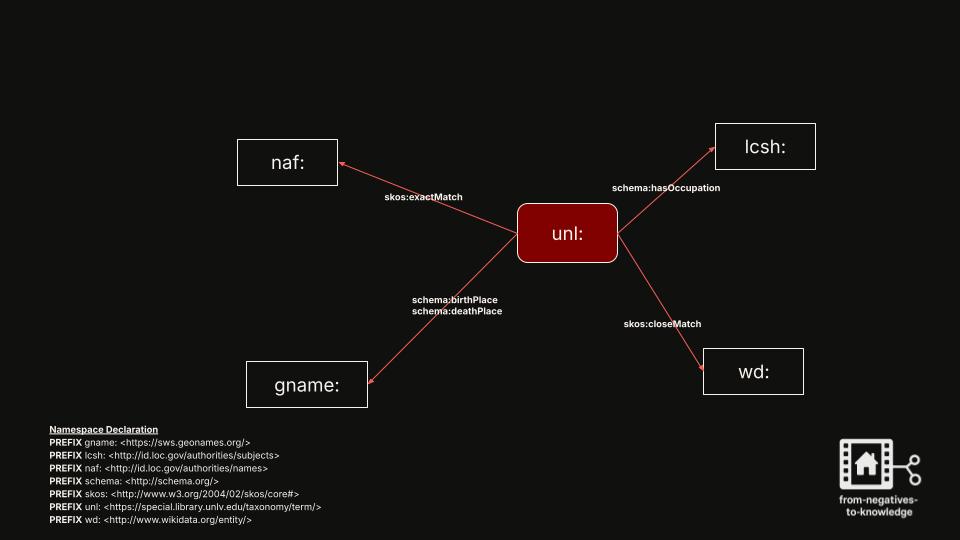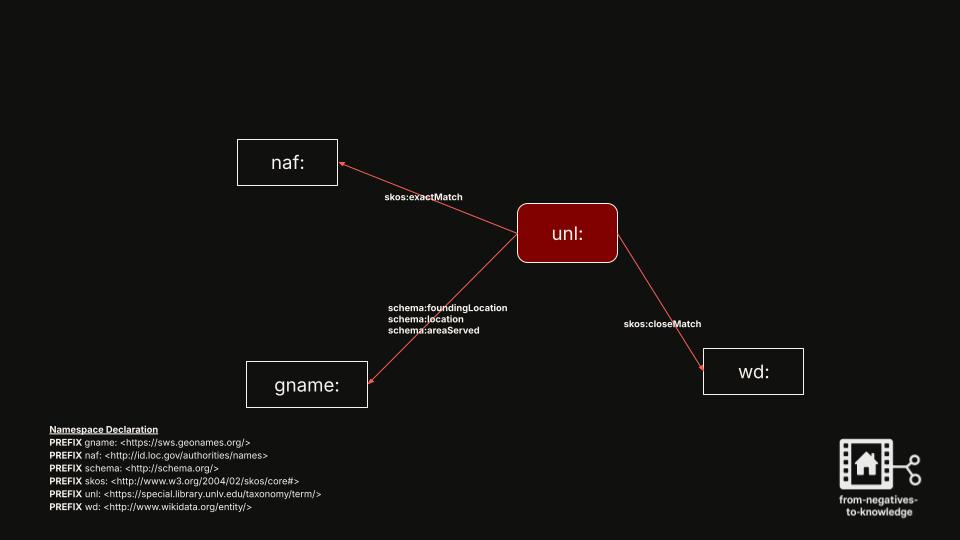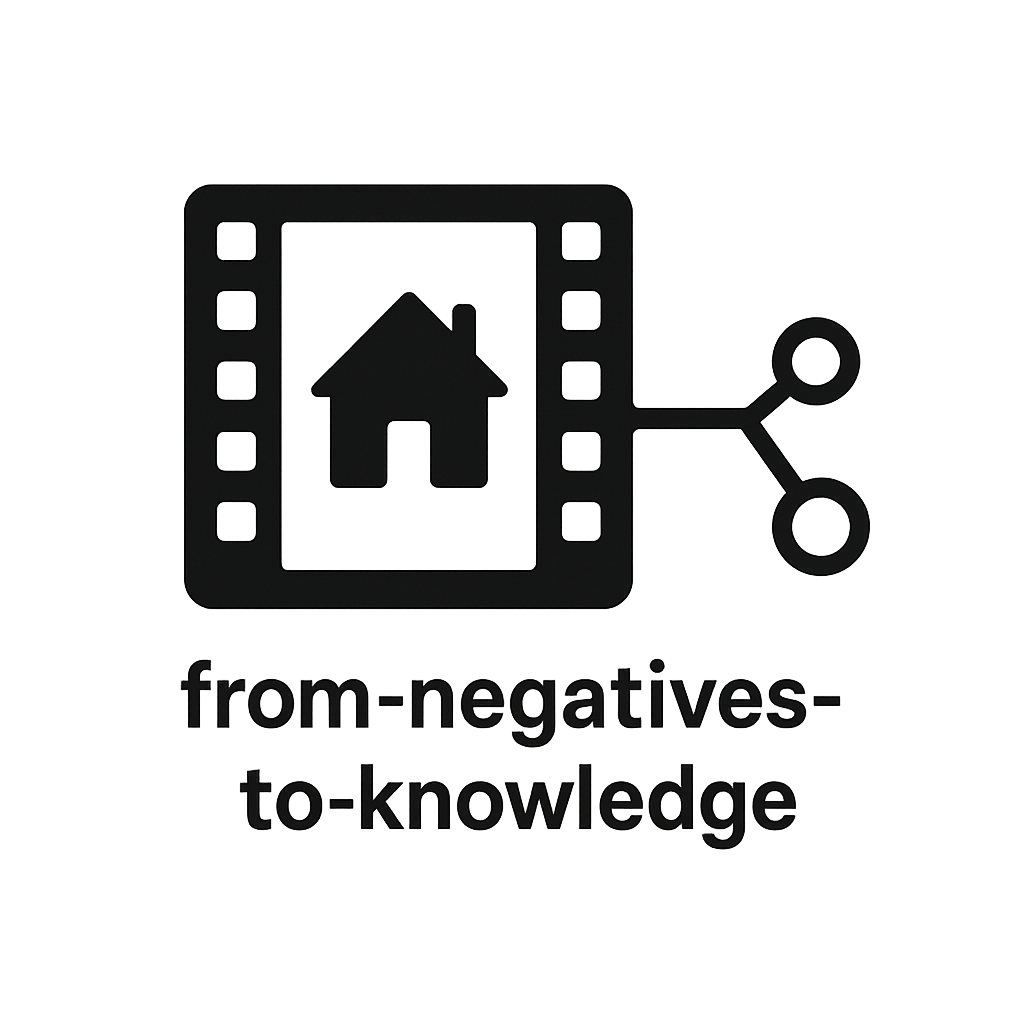from-negatives-to-knowledge
Data Modeling
This page provides an overview of how entities, relationships, and vocabulary terms are modeled in the knowledge graph supporting From Negatives to Knowledge. Modeling decisions help align local metadata with widely adopted vocabularies such as schema.org, skos, GeoNames, and lcsh.
🧾 Property Guidelines
The following tables outline the required and recommended properties used when modeling entities in this project:
| Required Properties | Recommended Properties |
|---|---|
schema:name |
rdfs:seeAlso |
skos:prefLabel |
skos:closeMatch |
rdf:type skos:Concept |
skos:exactMatch |
rdf:type [Select a schema class or subClass] |
skos:altLabel |
skos:note |
|
skos:inScheme unl: |
🧭 Namespace Declaration
In RDF data modeling, namespace declarations define shorthand prefixes for longer URIs. These prefixes allow for clean, readable references to commonly used vocabularies across your RDF data and SPARQL queries.
The following namespaces are used in this project:
PREFIX agrelon: https://d-nb.info/standards/elementset/agrelon#
PREFIX dct: http://purl.org/dc/terms/
PREFIX gname: https://sws.geonames.org/
PREFIX gn: http://www.geonames.org/ontology#
PREFIX lcsh: http://id.loc.gov/authorities/subjects/
PREFIX naf: http://id.loc.gov/authorities/names/
PREFIX rdf: http://www.w3.org/1999/02/22-rdf-syntax-ns#
PREFIX rdfs: http://www.w3.org/2000/01/rdf-schema#
PREFIX schema: http://schema.org/
PREFIX skos: http://www.w3.org/2004/02/skos/core#
PREFIX unl: https://special.library.unlv.edu/taxonomy/term/
PREFIX wd: https://www.wikidata.org/entity/
PREFIX xsd: http://www.w3.org/2001/XMLSchema#
For a full list of namespace declarations see my library Linked Data Namespaces Repo.
🖼️ Visualizing Modeling Decisions
Below are conceptual diagrams showing how key entity types are modeled and linked to external vocabularies:
📌 1. schema:Person Modeling Decisions

A diagram showing how a schema:Person is modeled using properties like birthDate, birthPlace, deathPlace, hasOccupation, and connections to external authority files using skos:closeMatch and skos:exactMatch.
📌 2. schema:Organization Modeling Decisions

This diagram models various types of organizations—such as schools, churches, and businesses—using appropriate schema:Organization subclasses and descriptive properties.
📌 3. unl: Modeling Decisions (Node-to-Node Linking)

This conceptual graphic shows how one unl: node is connected to another unl: node using semantic relationships drawn from vocabularies such as agrelon: and schema:. These links capture real-world relationships like affiliation, employment, or organizational roles within the graph.
